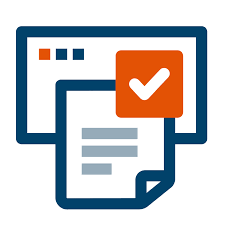What is Digital Literacy?
- Claude Schott

- Jan 28, 2022
- 2 min read

"Digital Literacy is about being able to make sense of digital media. This occurs through meaningful and sustainable consumption and curation patterns that improve an individual's potential to contribute to an authentic community. This includes the ability to analyze, prioritize, and act upon the countless digital media 21st-century citizens encounter daily."- Terry Heick.
Recently, the U.S. Congress has introduced a new bill that seeks to create a digital literacy and equity commission whose charter will include assessing and determining frameworks, measurement, necessary skills, and advocacy to foster inclusion and learning.
In short, digital literacy aims to increase findability, understanding, and comprehension of digital media. In my opinion, the missing piece to this effort is what tools should we use? Accordingly, enterprise content management (ECM) technology, especially Laserfiche, can provide much functionality and support to the entire effort. We often talk about enterprise content management as both a practice and a technology. I envision DAM (digital asset management) as the same. Heick's vision is a mix of ECM, DAM, search engines, social….and so on.
Here's how I see Laserfiche fit with Terry Heick's digital literacy framework. Her method divides literacy into four quadrants (the definitions are Heick's, comments are mine):
Comprehension- Understanding both the implicit and explicit meaning of content. Laserfiche provides business, education, government, and healthcare organizations a secure and efficient tool for bringing all their documents in one place. This solution can also be applied to other content, like videos or photos, which can be organized to get information, comprehend the data, and make better business decisions.
Interdependence- Connecting relevant and symbiotic media. Innovative metadata strategies can be created to make connections between documents clear. To make these connections, an enterprise content management system needs to make information findable using metadata assignments and a robust search engine.
Social Factors- Sharing timely and relevant data within networks. Within an organization, Laserfiche fosters collaboration and reviews documents. It can also share information with clients or make information publicly available.
Curating, storing, and organizing data in accessible ways- This quadrant is the most obvious fit for a product like Laserfiche. It can serve as a central repository for content, or act as integrative middleware, pushing information between systems.
I will keep an eye on this legislation and comment further as it moves through the process. In the meantime, we've got a webinar coming up on February 22 at 11 AM about best practices for Laserfiche Capture. If you are interested, you can sign up here.



Comments